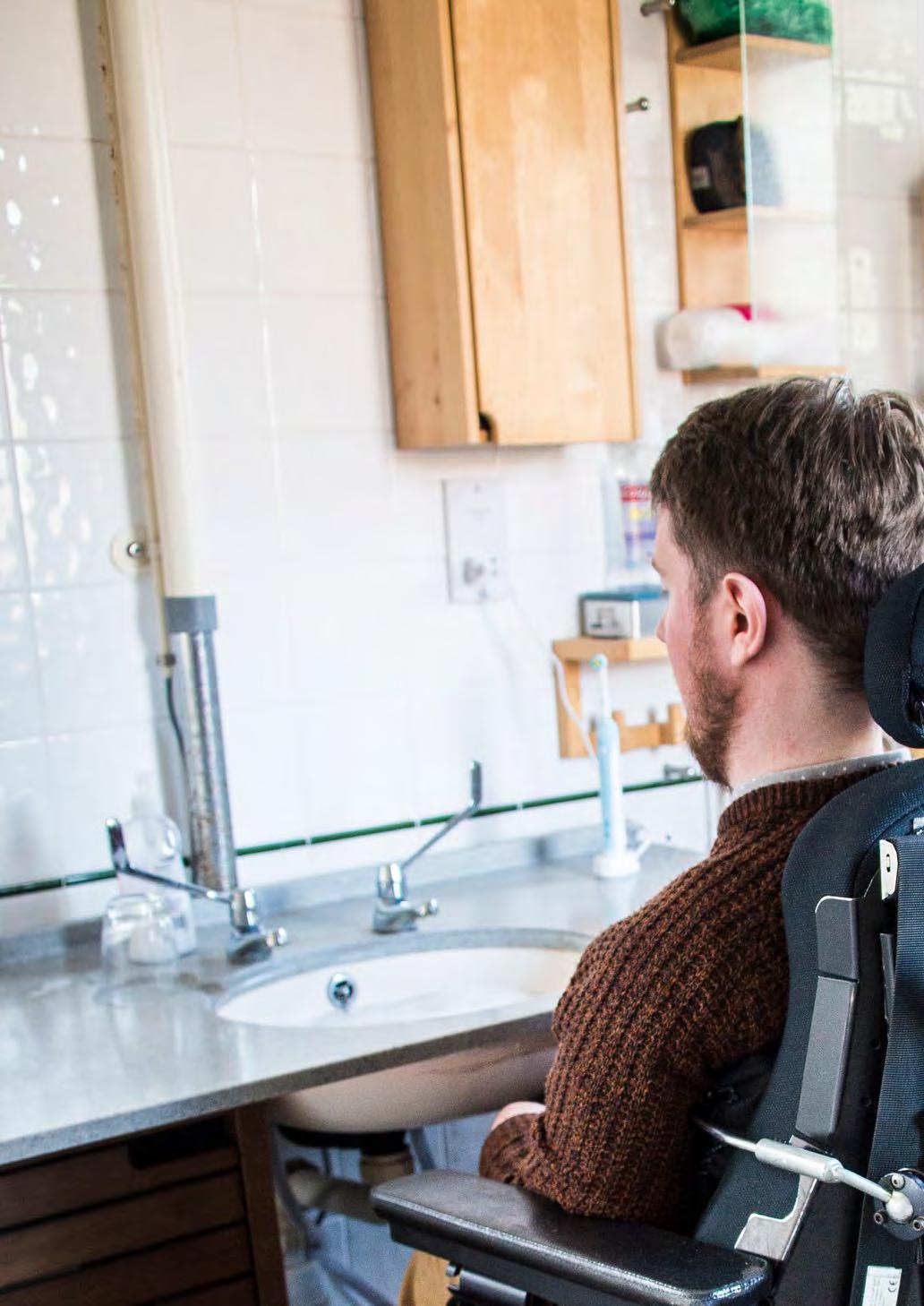
3 minute read
6. Conclusion
Building houses that meet a good standard of accessibility and adaptability is clearly possible, as demonstrated by the Greater London Authority’s policies over the last 10 years.
Their most recent figures show that 93 per cent of their new properties meet this standard, commonly referred to as Lifetime Homes Standards. The small amount of data that is recorded in the rest of Britain suggests that the proportion of accessible housing being built elsewhere is small. The benefits of ensuring that a supply of new houses that are accessible and adaptable are clear. A greater supply will ensure that disabled people are able to claim their right to independent living and will reduce social care costs for local authorities and health costs for the NHS.
Advertisement
In order to deliver a greater supply of accessible houses, local authorities need to recognise disabled people are experts in determining and promoting better housing solutions for themselves. Governments at national and local level need to be much more effective in engaging disabled people at both at the strategic and operational levels to meaningfully reflect their input, in a continual cycle of improvement.
In this report we have stressed that the importance of thinking beyond ‘bricks and mortar’. Advocacy, advice and support to make choices or challenge systems when things go wrong, are essential. Mental health came out as a consistent theme; both in its own right and linked to the stresses associated with inappropriate accommodation. Disabled people told us repeatedly that housing allocation and adaptations systems are complex and difficult to navigate. We found worrying evidence of a reduction in services that aim to support or advise disabled people who are at risk either of homelessness or ill health because of an inaccessible home. Where we did come across good practice, the person-centred approach together with specialist input from professionals improved people’s physical and mental wellbeing and prevented them from reaching a crisis point.
To keep the scope of the inquiry manageable, we have not looked at social care or health in any depth. However, in reality health, social care and housing are all inextricably linked. A consistent finding in England is that health, housing and social care departments continue to work in silos with disagreements about who pays for what. While the devolved nations and regions are striving for a more integrated approach, there is clearly a long way to go. In particular, there is insufficient attention given to those currently in residential care who wish to live independently and could do so with the right support.
The affordability and availability of housing generally is being hotly debated and is top of the political agenda. For disabled people, the affordability issue is particularly acute due to disabled people being less likely to be in employment or being older and in receipt of a pension. The private-rented sector, which has grown rapidly in recent years, is often expensive with short-term tenancies commonplace. Disabled people across Britain told us about the difficulties they faced in private-rented accommodation. In social housing the inquiry found that there is very strong and unmet demand from disabled people, where the average waiting time is over two years and in once case 20 years. Increasing the availability of social housing needs to be part of the solution to the shortage of accessible homes. In England there is a particular need to reform private sector tenancies to deliver both affordability and security of tenure.
Disabled people across Britain told us about the positive role that adaptations can play in ensuring they can live independently. The inequality in funding arrangements for adaptations in Scotland is a barrier to equality, a review of the legislation; policy and funding for adaptations across tenure types is required. The increase in funding for Disabled Facilities Grants in England and Wales is very welcome, along with a recently announced review aimed and removing the bureaucracy that exists in many authorities. With only seven per cent of funding going to the private rented sector, there are particular hurdles that need to be overcome in this sector.
Progress to ensure that disabled people have accessible homes that support their right to independent living is unlikely to be made unless disabled people are actively engaged in shaping housing policy and practice. Disabled people reported that local authorities’ practice on consultation with disabled people is weak and that this, coupled with reductions in funding for disabled people’s organisations, makes it difficult to contribute to formal consultation processes.
There are huge benefits for future proofing Britain’s housing stock. The human and economic costs of inaccessible housing can be avoided if disabled people’s requirements are identified and built into planning and delivery of new housing supply.










